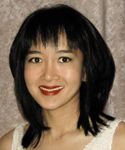Article
Ranibizumab monotherapy found superior to laser treatment for diabetic macular edema
Analyses of data collected through 24 months of follow-up in a phase II, prospective, multicenter clinical trial support the conclusion that vascular endothelial growth factor blockade with ranibizumab is beneficial for the treatment of diabetic macular edema.

"Results from this phase II study demonstrate that anti-VEGF therapy with ranibizumab has biological activity in treating DME and also indicate there may be a benefit of combining ranibizumab with laser therapy for reducing the number of ranibizumab injections," said Dr. Do, assistant professor of ophthalmology, Wilmer Eye Institute, Johns Hopkins University School of Medicine, Baltimore.
"However, data from additional studies and longer-term follow-up are needed to determine the optimal dosing regimen for ranibizumab in the treatment of DME," she said. "Perhaps some patients may benefit from more frequent injections or perhaps a higher dose."
Study participants were randomly assigned 1:1:1 to treatment with ranibizumab 0.5 mg (baseline and months 1, 3, and 5), focal/grid laser photocoagulation alone (baseline and month 3 if DME was present), or laser photocoagulation (baseline and month 3) combined with ranibizumab (administered 1 week prior to the laser photocoagulation). After 6 months, the primary efficacy endpoint, all groups were switched to a p.r.n. dosing scheme in which re-treatment was based on presence of foveal thickness ≥250 µm.
"After month 6, treatment selection was at the investigator's discretion and most patients that initially were [assigned] to laser or combination therapy (ranibizumab plus laser) were switched to ranibizumab monotherapy at 6 months," Dr. Do said.
The three study groups were well-matched in their demographic and baseline characteristics. Mean Snellen visual acuity (letters read) was about 20/80 in all groups, and mean excess foveal thickness ranged from 204 to 257 µm.
At 6 months, ranibizumab demonstrated statistically significant superiority to laser treatment alone in the primary efficacy analysis of mean change from baseline BCVA (+7.24 letters versus –0.43 letters) as well as in the secondary efficacy analyses of mean change in excess central subfield thickness (–57% versus –11%), and the proportion of patients who achieved a 3-line or greater gain from baseline BCVA (24% versus 0%). Patients who received combination treatment had a mean +3.80-letter gain from baseline visual acuity, 12% gained 3 or more lines from their baseline visual acuity, and they had a 42% reduction in excess central subfield thickness.
In the READ-2 protocol, subjects who were assigned to the combination group (ranibizumab plus laser) were followed every 3 months and could only receive treatment at 3-month intervals.
"Eyes that received combination therapy did not have as robust visual acuity gains at month 6 compared [with] eyes that received ranibizumab monotherapy," Dr. Do said. "However, the number of ranibizumab injections [was] different [between] these two treatment arms, and eyes that were [assigned] to ranibizumab monotherapy received more ranibizumab injections than those [assigned] to the combination group. The visual acuity results suggest that more frequent ranibizumab treatments are likely more beneficial."





